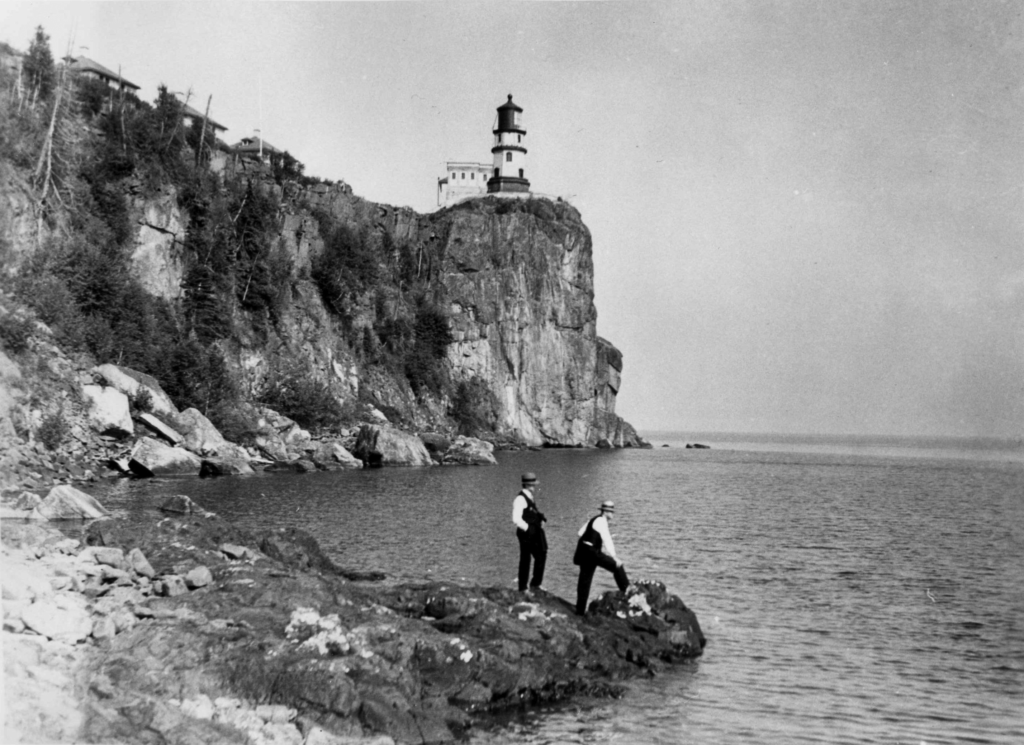
Kate Walker here, keeping the light on Robbins Reef.
When the lighthouse tender stopped at Robbins Reef with coal and oil, Inspector Snow often had interesting stories to relate. In 1907 he mentioned that Congress had appropriated $100,000 for the construction of a light-house and fog-signal station of the second order to be located at or near Carbarandum Point, in the vicinity of Split Rock, on the north shore of
Lake Superior in Minnesota.
Letter from the Light-House Board to the Committee on Interstate and Foreign Commerce, House of Representatives, 1907:
While there is a light and fog-signal now at Two Harbors, about eighteen miles to the southward and westward of Split Rock, vessels bound to
the head of the lake in thick weather may find themselves to the northward. The vicinity of Split Rock is the seat of a most unusual magnetic attraction, which causes the north end of the compass to be deflected to the eastward. Vessels in the ore trade run at full speed and the lake in the vicinity of Split Rock is deep, so that soundings do not give good warning to boats of their approach to the shore. There have been wrecks in that vicinity in consequence.
The nature of the site at Split Rock Light Station was such that all supplies for the station were hoisted from the lake to the top of the cliff, 130 feet, and therefore a derrick was necessarily part of the station.
Do you know how a derrick works? Have you seen cranes operate, building tall structures in cities? A derrick works on much the same principle hoisting building materials up a sheer cliff.

By the end of construction in 1910, workers had lifted 310 tons of building materials up the 100-foot cliff face from boats moored below. Gusty winds kept such a procedure from ever becoming routine.
In 1924 an elevated tramway replaced the often hazardous and unserviceable derrick. Built by local labor supervised by a lighthouse engineer, it stood until 1934, when the station received a truck to haul its supplies.

Split Rock is a major coast station on the Great Lakes, with a number of substantial buildings for its equipment and keepers. The Minnesota Historical Society has made it a major tourist attraction by keeping it in pristine condition and having costumed interpreters in all the buildings. I would like to visit Split Rock Light Station. Wouldn’t you?
************

Information is from National Archives Record
Group 26, Entry 48


Hi Kate, Is there a resource that would help identify the lighthouse below. Can I send you an email with a picture attached? Thank you.
Hi William – The “Kate’s Korner” posts are submitted by an anonymous writer. You can email me at jeremy@uslhs.org and I can see if I can identify your mystery lighthouse.